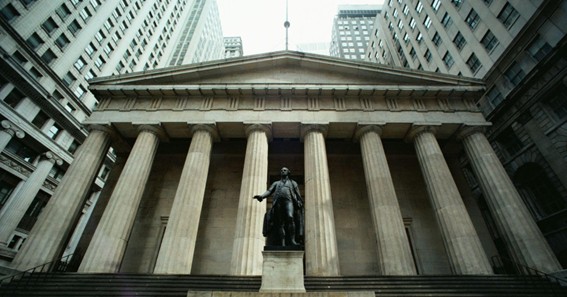The Sim Corder/Harrison Mill is a monument to the ingenuity and resilience that defined industrial progress during its era. Beyond its primary role in production, the mill became a hub for technological advancement, cultural identity, and community development.
Its pioneering and innovative engineering practices influenced broader industrial standards, while its economic contributions fostered local growth and opportunities. Over the years, Grady Paul Gaston notes how it has grown from an operational site to a cultural landmark, symbolizing the intersection of history, technology, and social transformation.
Efforts to preserve the mill highlight its ongoing relevance, offering insights into historical achievements while inspiring modern practices. The mill’s legacy demonstrates how industrial heritage can bridge the past and present. Its story is a testament to the power of innovation and its lasting impact on communities and industries alike.
Origins and Historical Role
The Sim Corder/Harrison Mill was established during a pivotal era of industrial growth. Built to harness the region’s abundant natural resources, the mill quickly became a vital hub for production and innovation, reflecting the shifting landscape of industrialization in the area.
Its significance extended beyond its immediate function, as it catalyzed advancements in engineering practices. Similar to other mills of its time, it played a central role in integrating new mechanical processes, which transformed how industries operated.
This marked a turning point, not only for the mill but for the surrounding communities reliant on its output. Local industries flourished as the mill’s operations expanded, illustrating its importance in driving regional progress. Comparable industrial sites often became the backbone of emerging towns, and the Sim Corder/Harrison Mill’s legacy is no different.
Innovative Engineering and Technology
The Sim Corder/Harrison Mill is renowned for its pioneering engineering features, which set it apart from other industrial sites of its time. It utilized advanced machinery and innovative mechanical designs that streamlined production processes, allowing it to operate with greater efficiency and reliability.
Some of the technologies integrated into the mill were considered ahead of their time, reshaping industrial standards across the region. Comparable facilities often struggled to keep pace, as the mill’s innovations provided a competitive edge. The ability to adapt and incorporate such forward-thinking practices reflected the ingenuity of those who designed and maintained its operations.
The craftsmanship and foresight demonstrated at the mill made it a beacon for engineers seeking inspiration in industrial design. Through its engineering ingenuity, the mill became a model for others seeking to modernize their own systems.
Economic and Community Influence
The Sim Corder/Harrison Mill was a cornerstone of the local economy, providing employment opportunities and helping to sustain countless families in the surrounding area. Its workforce, which often included multiple generations from the same families, formed a tight-knit community deeply rooted in the mill’s operations.
Beyond its economic contributions, the mill played a role in shaping the social and cultural fabric of the community. It became a gathering place, a symbol of collective effort, and a source of pride for those who depended on its success. Comparable mills often acted as anchors for the towns that grew around them, and the Sim Corder/Harrison Mill was no exception.
As the mill thrived, so did the local economy, with its influence extending to industries such as transportation, agriculture, and trade. It exemplifies how industrial hubs can serve as catalysts for regional transformation, creating ripple effects that last long after their original operations have ceased.
Cultural and Historical Recognition
Over time, the Sim Corder/Harrison Mill earned recognition as more than just an industrial site; it came to symbolize the ingenuity and resilience of the region’s past. Efforts to preserve the mill reflect a growing awareness of its cultural and historical significance. Such initiatives have sought to ensure that its story remains intact, offering future generations a window into the technological and social achievements of an earlier era.
This recognition often includes designating the mill as a cultural landmark and celebrating its role in shaping local identity. Festivals, educational programs, and community events tied to the site have helped keep its legacy alive, fostering a sense of pride among residents.
Modern Relevance and Legacy
Although its original operations may have ceased, the mill’s impact continues to resonate in modern engineering and industrial practices. The innovations it embraced during its peak established standards that influenced subsequent developments in machinery and manufacturing techniques.
Engineers and historians alike find value in studying the mill’s design, drawing lessons from its ability to balance efficiency with durability. Such insights have informed contemporary approaches to sustainable industrial practices, emphasizing the importance of learning from historical achievements to address modern challenges.
Preserving Industrial Sites
Preserving sites like the Sim Corder/Harrison Mill goes beyond nostalgia; it provides tangible benefits for education, tourism, and cultural appreciation. These sites also attract visitors, boosting local economies while deepening public understanding of the region’s history.
The preservation of industrial heritage fosters a connection between past and present, encouraging communities to take pride in their shared history. Comparable efforts worldwide underscore the universal importance of protecting such landmarks, ensuring they remain a source of inspiration and learning for years to come. These initiatives highlight the broader value of preserving shared histories, bridging cultural divides, and celebrating human ingenuity.

